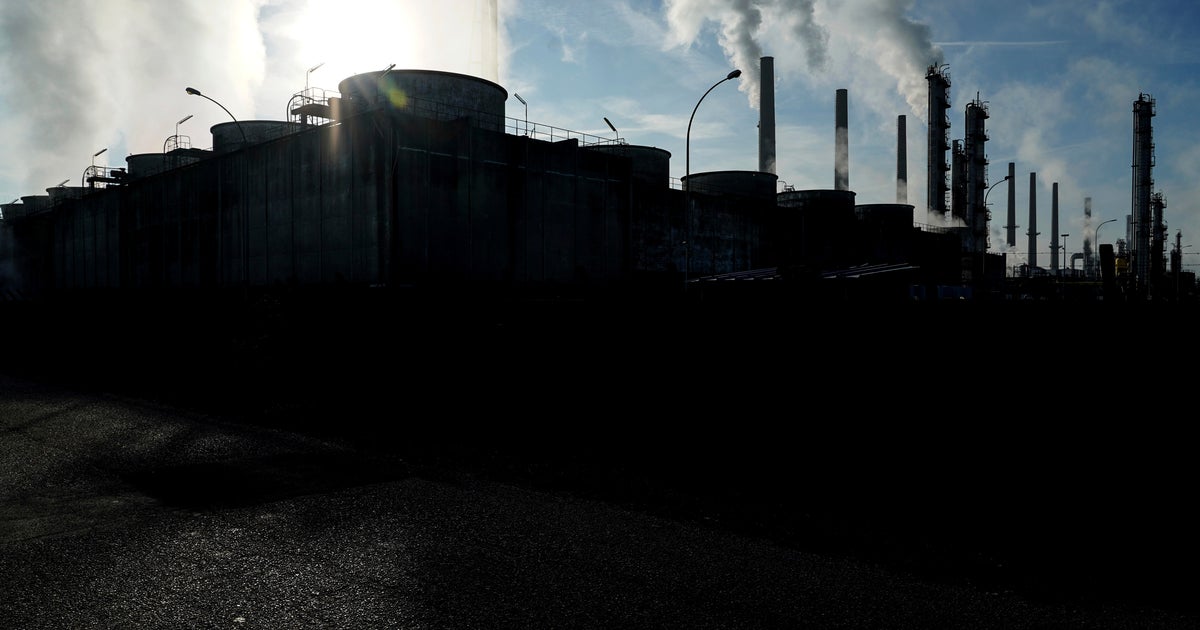Hawaii's Kilauea volcano: New eruption triggers house fires
PUNA, Hawaii -- Authorities say new eruptions from Hawaii's Kilauea volcano have damaged at least two homes. They were damaged from lava creeping through the Puna district's Leilani Estates subdivision, CBS Honolulu affiliate KGMB-TV reports. The Hawaii County Civil Defense said the third eruption occurred around 6:40 a.m. Friday on Kaupili Street.
Later on Friday, two earthquakes rocked Hawaii's Big Island.
The new eruptions come a day after the volcano forced nearly 1,500 people to flee from their mountainside homes. Authorities detected high levels of sulfur gas that could threaten the elderly and people with breathing problems.
The Hawaiian Volcano Observatory said active volcanic vents were erupting on Makamae and Mohala streets. Authorities urged residents in Leilani Estates and Lanipuna Gardens to evacuate immediately.
Civil defense officials cautioned the public about high levels of sulfur dioxide near the volcano and urged vulnerable people to leave. Exposure to the gas can cause irritation or burns, sore throats, runny noses, burning eyes and coughing.
Video showed lava spurting into the sky from a crack in a road and a line of lava snaking through a forest. On Friday, the activity continued, with reports of eruptions from volcanic vents on two streets.
Jeremiah Osuna, who captured the drone footage, described the scene as a curtain of flame roaring through the vegetation.
"It sounded like if you were to put a bunch of rocks into a dryer and turn it on as high as you could. You could just smell sulfur and burning trees and underbrush and stuff," he told KHON.
There were no immediate reports of injuries, but at least 100 people were staying in shelters Friday, with many more evacuees believed to be with relatives and friends.
The Hawaii governor activated the National Guard to help with evacuations and provide security to about 770 structures left empty when residents sought shelter.
"My family is safe, the rest of the stuff can be replaced," one resident told KGMB-TV. "When I bought here 14 years, I knew that this day would eventually come. But the reality is sinking in now."
Another resident, Ikaika Marzo, said he witnessed large fountains of lava in the community.
"When we drove on that road, we heard a noise in the forest and it was like a little thump," Marzo told KGMB-TV. "Next thing, like three to five seconds after that, we smelled sulfur. After that, that's when there was tons of sulfur. Then we saw some lava popping out."
Kilauea has erupted periodically for decades, and scientists said they have no way of predicting how long the eruption will continue.
A key factor will be whether magma reservoir at the summit starts to drain in response to the eruption, which has not happened yet, said Asta Miklius, a geophysicist with the U.S. Geological Survey's Hawaiian Volcano Observatory.
"There is quite a bit of magma in the system. It won't be just an hours-long eruption probably, but how long it will last will depend on whether the summit magma reservoir gets involved. And so we are watching that very, very closely," Miklius said.
County, state and federal officials had been warning residents all week that they should be prepared to evacuate because an eruption would give little warning.
The geological survey on Thursday raised the volcano's alert level to warning status, the highest possible, meaning a hazardous eruption was imminent, underway or expected.
Henry Calio said the first sign that something might be wrong happened when cracks emerged in the driveway of his home in Leilani Estates. His wife, Stella, then received a call from an official who told them to get out immediately.
The two feared they might lose their house.
"This is our retirement dream," Henry Calio said.
Geologists said new ground cracks were reported Thursday. Hot vapor emerged from a crack and spattering lava began to erupt.
Areas downslope of the erupting vents were at risk of being covered by lava. Leilani Estates appeared to be at greatest risk, but scientists said new vents and outbreaks could occur, and it was impossible to say where.
Kilauea's Puu Oo crater floor began to collapse Monday, triggering the earthquakes and pushing the lava into new underground chambers. The collapse caused magma to push more than 10 miles downslope toward the populated southeast coastline of the island.
The magma later crossed under Highway 130, which leads to a popular volcano access point. Civil defense authorities closed the area to visitors and ordered private tour companies to stop taking people into the region.
Most of Kilauea's activity has been nonexplosive, but a 1924 eruption spewed ash and 10-ton rocks into the sky and killed one person.
A 1983 eruption resulted in lava fountains soaring over 1,500 feet into the sky. In the decades since, the lava flow has buried dozens of square miles of land and destroyed many homes.





